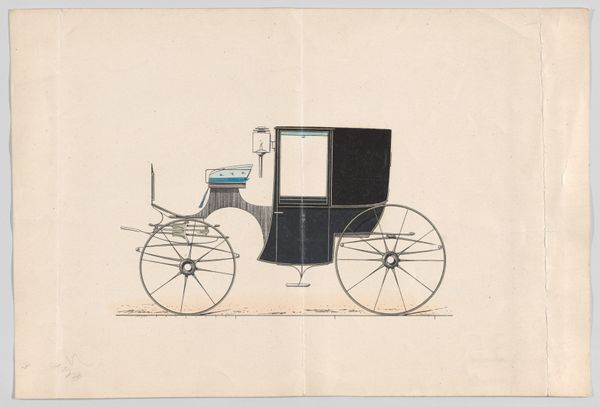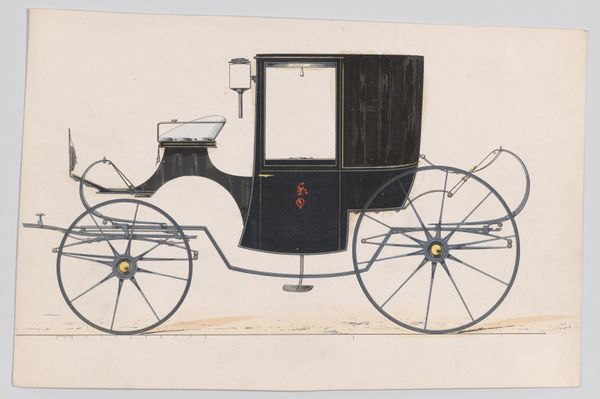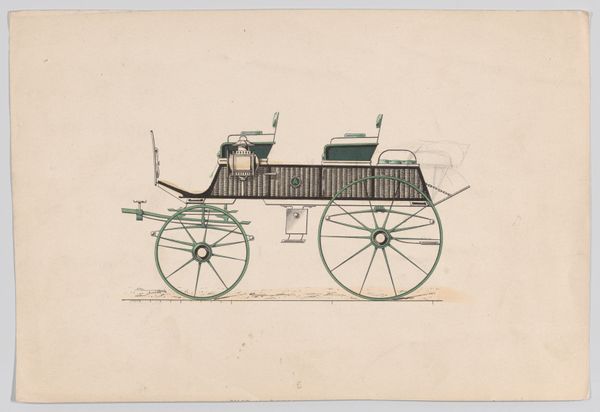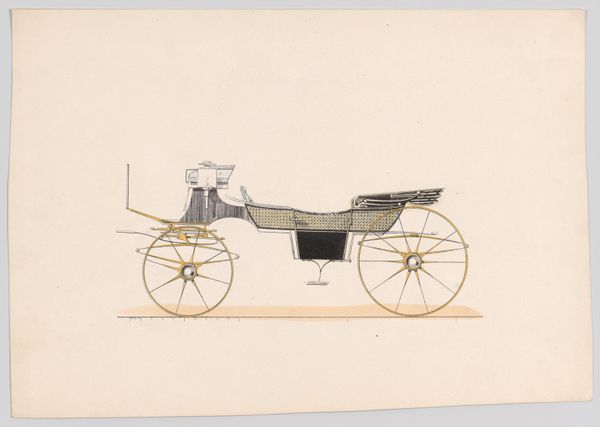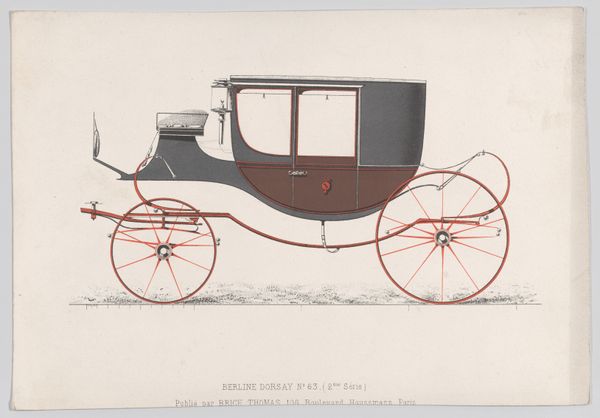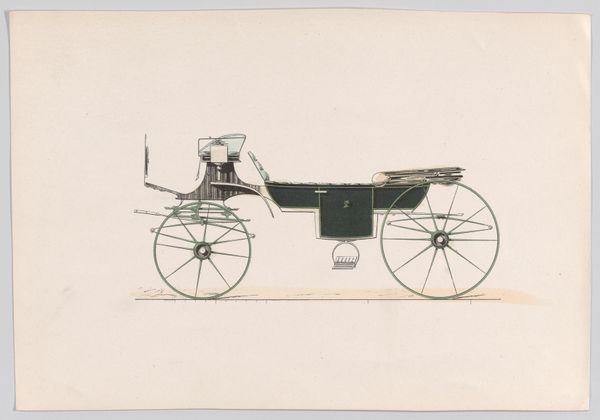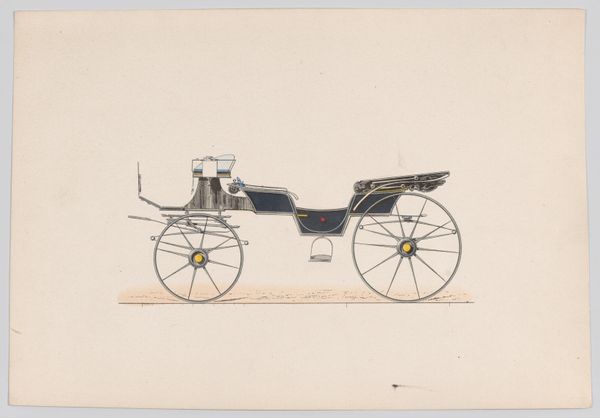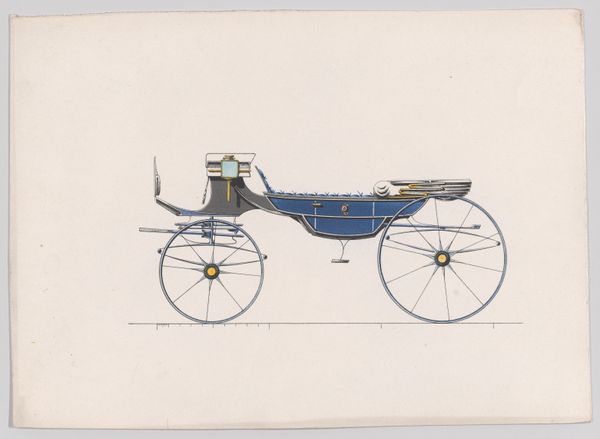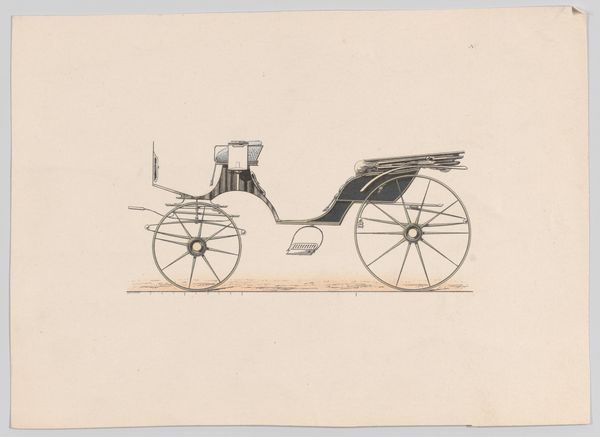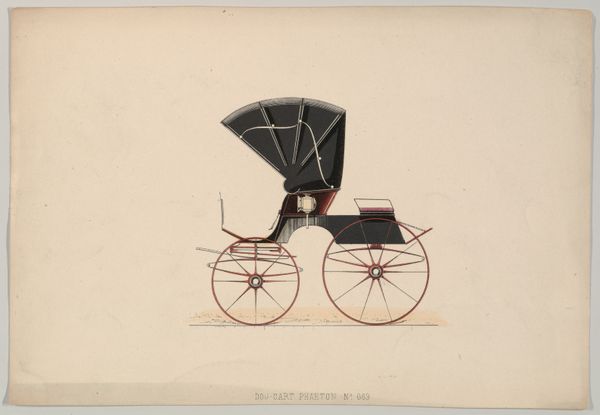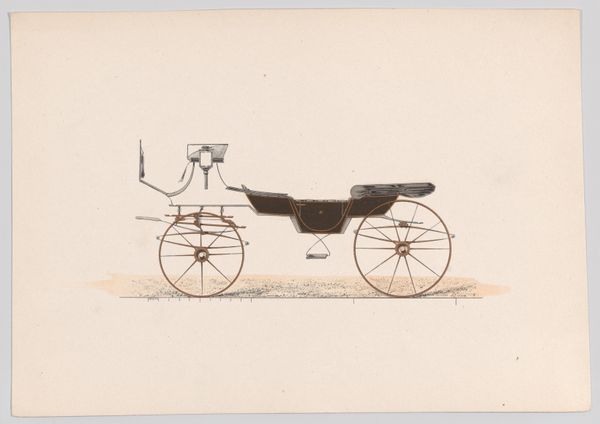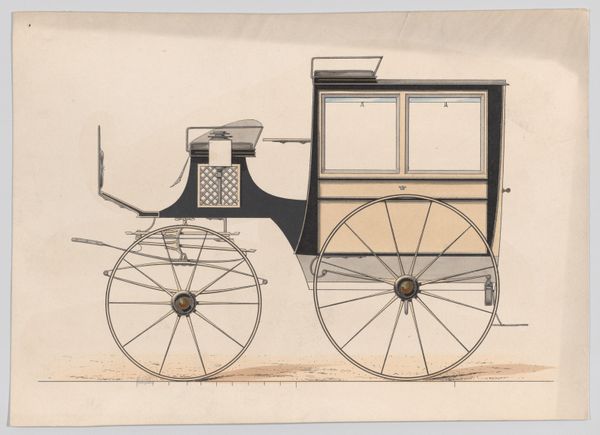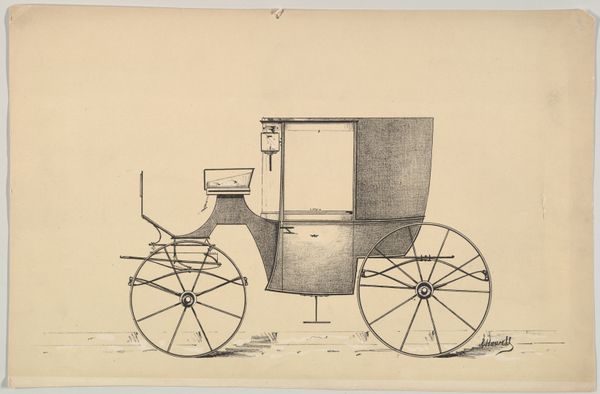
drawing, print
#
drawing
# print
#
geometric
#
line
Dimensions: sheet: 6 3/16 x 8 3/4 in. (15.7 x 22.2 cm)
Copyright: Public Domain
Curator: What strikes me most about this image is the sheer aspirational design! We are looking at an anonymous drawing and print entitled "Design for Chariot D'Orsay Carriage," created between 1865 and 1875. It's part of the collection at the Metropolitan Museum of Art. The line work really highlights the geometric aspects, don't you think? Editor: Absolutely. The first thing I thought was "steampunk fairy tale carriage"— like Cinderella if she were also an industrial baroness. It’s oddly charming with that austere Prussian blue and crimson against the light ground. The lines are so precise; you can almost hear the clip-clop of the horses. Curator: The historical context is crucial. During this period, carriage design reflected both technological advances and social status. The level of ornamentation, the materials used... everything spoke volumes about the owner's wealth and position. Think of it as the 19th-century equivalent of a luxury car. Editor: That’s it! It's all about display, isn't it? Public visibility became a mark of success in that era. I wonder how smooth the ride was—bet it wasn't as smooth as it looked. Maybe it speaks to how things only appear effortless at the top, like some kind of vehicular commentary on power and class. Curator: I agree. And consider who had access to this kind of luxury. It wasn’t just about personal transport, but also about participating in a certain social order. Who was included in these carriages, and perhaps even more significantly, who was excluded? Who was working in factories to make these types of carriages. It forces us to consider how material culture supported and reinforced power dynamics of that time. Editor: Wow. A pretty little drawing hides a complex history. So what appears merely decorative reveals itself to be kind of ruthless? All that polish glossing over an imbalance in society. Curator: Precisely. This piece opens up a fascinating lens to examine broader issues of social justice and equity, by offering critical reflections about how class structures were both normalized and propagated through these seemingly benign objects. Editor: I came in here looking at a blueprint, I'm leaving thinking about so much more. Funny how that happens. Curator: That’s the power of art, to propel us toward new understanding.
Comments
No comments
Be the first to comment and join the conversation on the ultimate creative platform.
